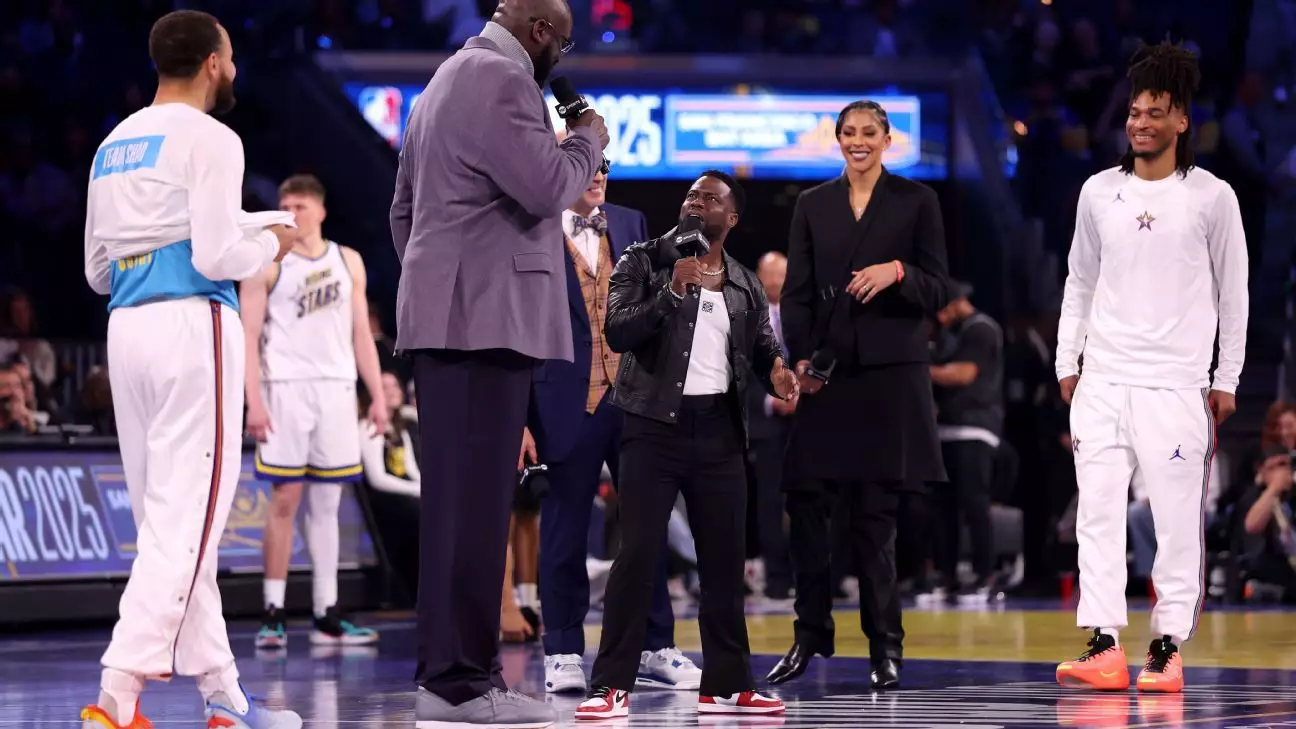The NBA All-Star Game is a celebration of the sport, showcasing the league’s premier talent in a spectacle cherished by fans for its high-flying dunks and flashy plays. However, as the league continues to evolve and seek fresh formats to engage fans, this year’s attempt drew a mixed response. The introduction of a tournament format has sparked discussions about its effectiveness, the pacing of the game, and player satisfaction.
For years, the All-Star Game followed a straightforward East vs. West showdown, a structure that fans grew accustomed to. In a bid to invigorate the event, the NBA adopted a four-team, single-elimination tournament format this year. Featuring teams drafted by well-known analysts from TNT’s “Inside the NBA,” the new structure centered around a target score of 40 points for each round. While the intent was to create an engaging viewing experience with high stakes, players had reservations, particularly regarding the interruptions during gameplay.
During the tournament, the breaks for various entertainment segments, including comedic performances, disrupted the game’s flow significantly. Trae Young, a key player in the lineup, was vocal about his dissatisfaction. “I didn’t like the breaks. The games were so short,” he commented, expressing concern that the pacing appeared designed to cater to broadcast needs rather than player or audience enjoyment. This sentiment resonated with others, indicating a need for a better balance between entertainment and competitive spirit.
One of the prominent issues with the new format was the excessive number of stoppages, especially during crucial moments of play. Players like Shai Gilgeous-Alexander noted that while the game had some competitive undertones, the disruption of momentum was less than ideal. “I would rather play without breaks,” he said, hinting at a longing for a more streamlined competition.
This concern was mirrored by Jaylen Brown, who stressed that physical gameplay would naturally suffer with constant interruptions. The final matchup—an intense contest showcasing veterans like Stephen Curry, who ultimately claimed the MVP title, against younger talents—was particularly marred by a 20-minute delay meant to honor the TNT broadcast crew. While tributes are meaningful, they also impact the players’ focus and intensity, which are crucial in a competitive game setting.
The absence of marquee names like LeBron James and Giannis Antetokounmpo due to injuries was another disappointment that overshadowed the event. Their presence could have potentially added to the electricity of the game, and their absence was felt both on and off the court.
Meanwhile, notable players reacted to the new format with a mix of curiosity and skepticism. Draymond Green raised an interesting point about the inclusion of first- and second-year players, questioning the merit of introducing newer players into big-time moments traditionally reserved for established stars. This perspective highlights ongoing debates within the league regarding the balance of honor versus entertainment value and what it means to earn one’s place on the All-Star stage.
Reflecting on the tournament’s structure, Stephen Curry emphasized the need for reformation. He indicated that efforts to infuse “new life” into the game were necessary, yet implementation might require refinement. Current leadership, including NBA Commissioner Adam Silver, faces a challenge to encapsulate the excitement the league promises while maintaining the authenticity and intensity players seek.
As players and analysts alike critique the new format, it is clear that for the NBA All-Star Game to thrive, a careful reevaluation of pacing and player experiences is necessary. The desire for a forthcoming All-Star format that reinvigorates the competitive atmosphere while satisfying both fan engagement and player enjoyment remains a top priority.
The NBA All-Star Game reflects a transformative phase within professional basketball, one that will require feedback loops from its players and therapeutic adjustments to align with the ever-changing nature of sports entertainment. Despite the critiques this year, the hope for a rejuvenated All-Star experience persists as stakeholders aim for a balance that cherishes tradition while embracing innovation.


Leave a Reply